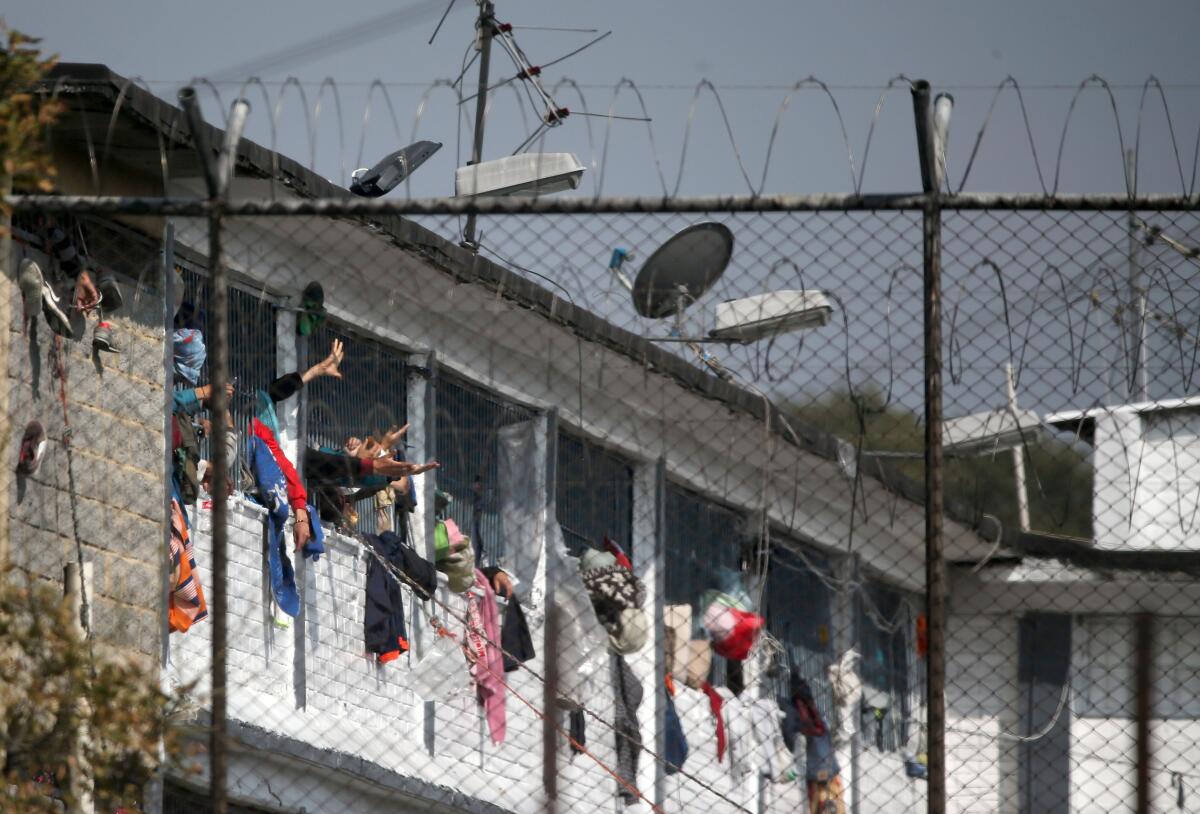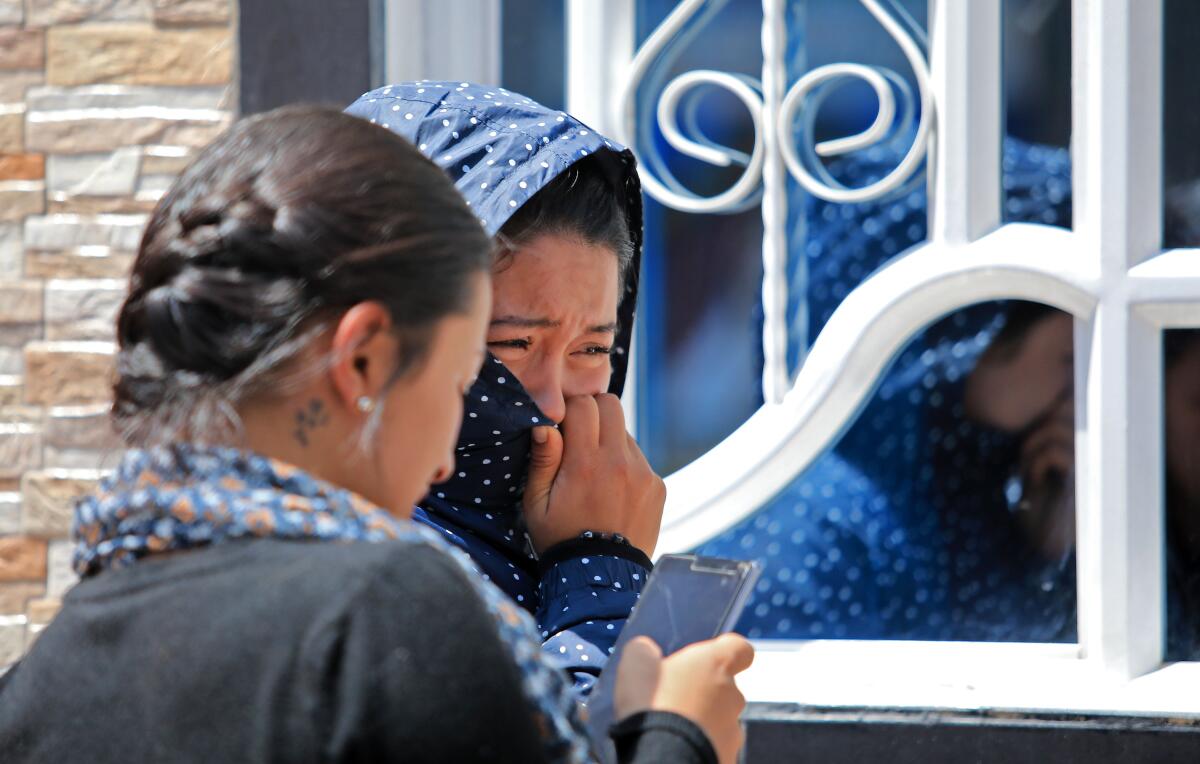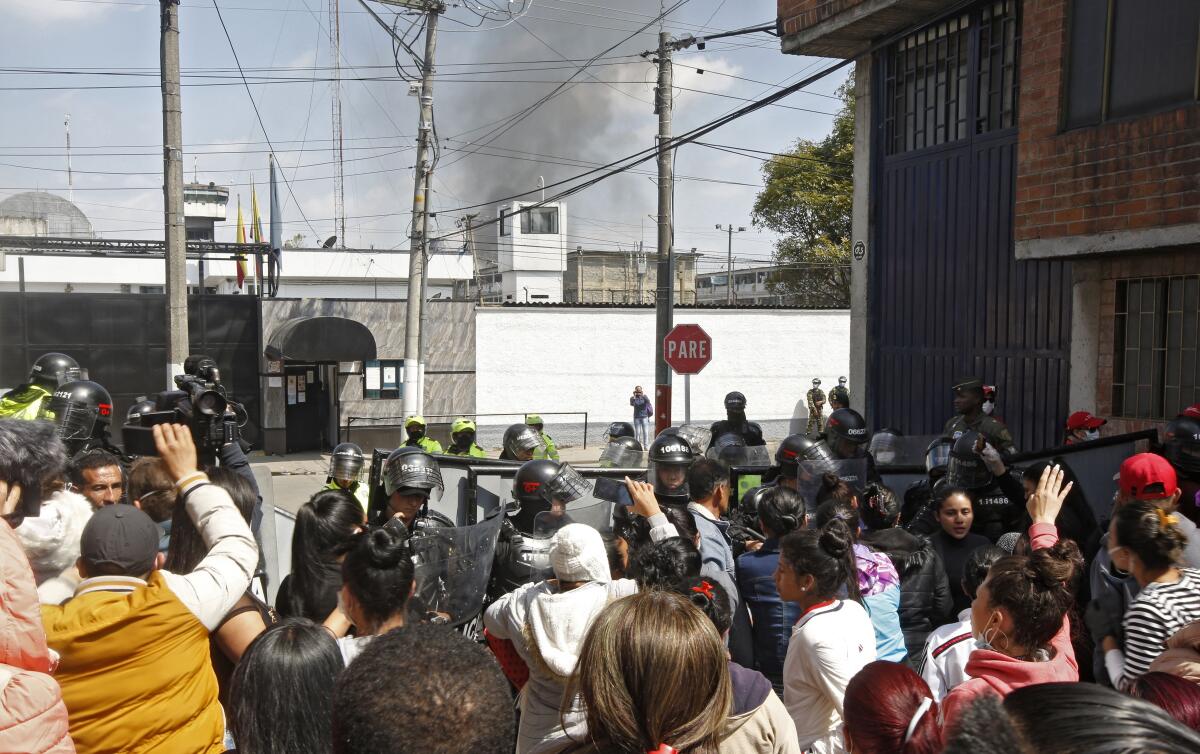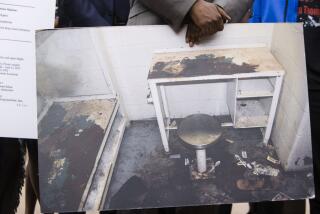Colombia may release some prisoners after deadly riots over coronavirus

- Share via
BOGOTA, Colombia — Colombian human rights activists have called for the release of some inmates from overcrowded prisons after weekend rioting linked to fears of the coronavirus left 23 prisoners dead and scores injured.
Experts warned that the riot could augur future unrest at chronically overcrowded lockups throughout Latin America as the number of coronavirus cases in the region multiplies.
The rioting at Bogota’s Modelo penitentiary, which houses about 5,000 inmates, occurred after demonstrations against overcrowding and a lack of coronavirus precautions devolved into a violent settling of scores between rival gangs, authorities said.

Disturbances were also reported at 12 other jails across Colombia, which has a prison population of 121,000.
Justice Minister Margarita Cabello said in a radio interview Monday that the spark that ignited the bloody riot was still unclear, but she characterized the incident as a failed attempt at a mass escape.
That explanation was rejected by prisoner advocates, who cited growing complaints about overcrowding and a lack of sanitary care for inmates as the number of coronavirus cases in Colombia increased.
As of Monday, Colombia had officially logged 277 infections and three deaths as the government has stopped all international flights and most domestic flights and restricted residents to their homes except for essential trips for food, medical treatment and banking. None of the reported cases have been linked to prisons.
One apparent factor in the riot at Modelo was a decision by administrators to ban family visitors to help curb the spread of the virus.
As of late Monday, authorities had yet to provide precise details on how the prisoners died.

With grisly images of the violence at Modelo splashed across Colombian media, authorities were considering heeding widespread suggestions to release some inmates in a bid to reduce prison populations.
After police regained control of the Modelo prison on Sunday, the Colombian government decreed a national “state of penal emergency.”
The decree could lead to releases of prisoners with low-risk profiles, but legal experts said that each would require approval by a judge, a time-consuming process.
Ariel Avila, an expert on Colombian security issues, said the country has 50% more inmates than its prisons are designed to hold, setting the conditions for unrest.
“All that was lacking was the fuse, and that was what coronavirus provided,” Avila said.
Jhon León González, a prisoner rights activist, said the Colombian government was ignoring “the permanent crisis” of overcrowding.
He called for the release of 10,000 to 15,000 inmates, including “female heads of household, expectant mothers, aging convicts, those about to complete their sentences” and former rebels of the Revolutionary Armed Forces of Colombia, which has been at peace with the government since 2016.
In an editorial published Monday, the Bogota newspaper El Tiempo backed suggestions that prisoners 60 and older be released to reduce overcrowding and to prevent the potential spread of coronavirus. Prisoners serving short sentences for nonviolent crimes could be put under house arrest, the newspaper suggested.
Inmates at Modelo have complained of a lack of water for drinking and washing, an absence of masks and gloves, and insufficient treatment for ailing prisoners, the newspaper reported.
Experts have long cited a shortage of doctors and nurses at Colombian prisons, along with a dearth of medicines.
“Prisons look more like concentration camps than rehabilitation centers and operate largely as schools for crime in which even individuals accused of minor offenses run the risk of being converted to criminals after serving jail sentences,” said Arlene Tickner, professor at Rosario University in Bogota.
The same problems afflict many jails and prisons throughout Latin America.
Adam Isacson, a senior fellow at the Washington Office on Latin America, a think tank and advocacy group, said prison authorities across the region should “reduce their population density quickly so that inmates don’t receive de facto death sentences” from possible coronavirus infection.
“Elderly inmates must be released,” he said. “It’s too dangerous for them. All in pretrial detention, except for those accused of serious violence or who don’t have relatives or homes that will take them, must be released.”
In her radio interview Monday, the justice minister indicated that a partial release of prisoners may soon take place and that the government was assessing whom to free.
“Logically, we just can’t release violators of sexual crimes [just because they] are older than 60 years,” Cabello said. “We are polishing a few things and measuring the impact that this could cause.”
The prison emergency has added one more crisis to the agenda of President Ivan Duque, a staunch U.S. ally who is dealing not only with the coronavirus outbreak but also resurging cocaine production, a flood of Venezuelan refugees and a faltering economy.
Special correspondent Kraul reported from Bogota with special correspondent Jenny Carolina González. Times staff writer Patrick J. McDonnell in Mexico City contributed to this report.
More to Read
Sign up for Essential California
The most important California stories and recommendations in your inbox every morning.
You may occasionally receive promotional content from the Los Angeles Times.










